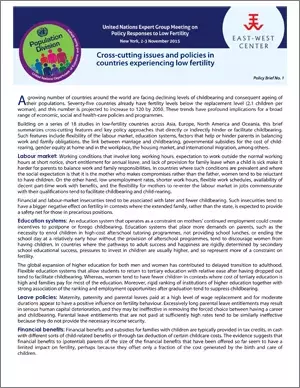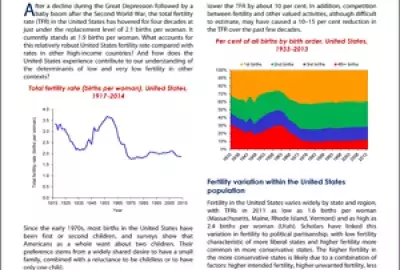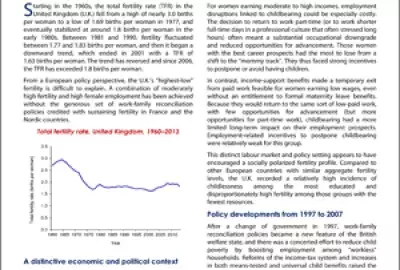Error message

A growing number of countries around the world are facing declining levels of childbearing and consequent ageing of their populations. Seventy-five countries already have fertility levels below the replacement level (2.1 children per woman), and this number is projected to increase to 120 by 2050. These trends have profound implications for a broad range of economic, social and health-care policies and programmes. Building on a series of 18 studies in low-fertility countries across Asia, Europe, North America and Oceania, this brief summarizes cross-cutting features and key policy approaches that directly or indirectly hinder or facilitate childbearing. Such features include flexibility of the labour market, education systems, factors that help or hinder parents in balancing work and family obligations, the link between marriage and childbearing, governmental subsidies for the cost of child-rearing, gender equity at home and in the workplace, the housing market, and international migration, among others.
|
A growing number of countries around the world are facing declining levels of childbearing and consequent ageing of their populations. Seventy-five countries already have fertility levels below the replacement level (2.1 children per woman), and this number is projected to increase to 120 by 2050. These trends have profound implications for a broad range of economic, social and health-care policies and programmes. Building on a series of 18 studies in low-fertility countries across Asia, Europe, North America and Oceania, this brief summarizes cross-cutting features and key policy approaches that directly or indirectly hinder or facilitate childbearing. Such features include flexibility of the labour market, education systems, factors that help or hinder parents in balancing work and family obligations, the link between marriage and childbearing, governmental subsidies for the cost of child-rearing, gender equity at home and in the workplace, the housing market, and international migration, among others.
|
Policy Briefs - United Nations Expert Group Meeting on Policy Responses to Low Fertility







